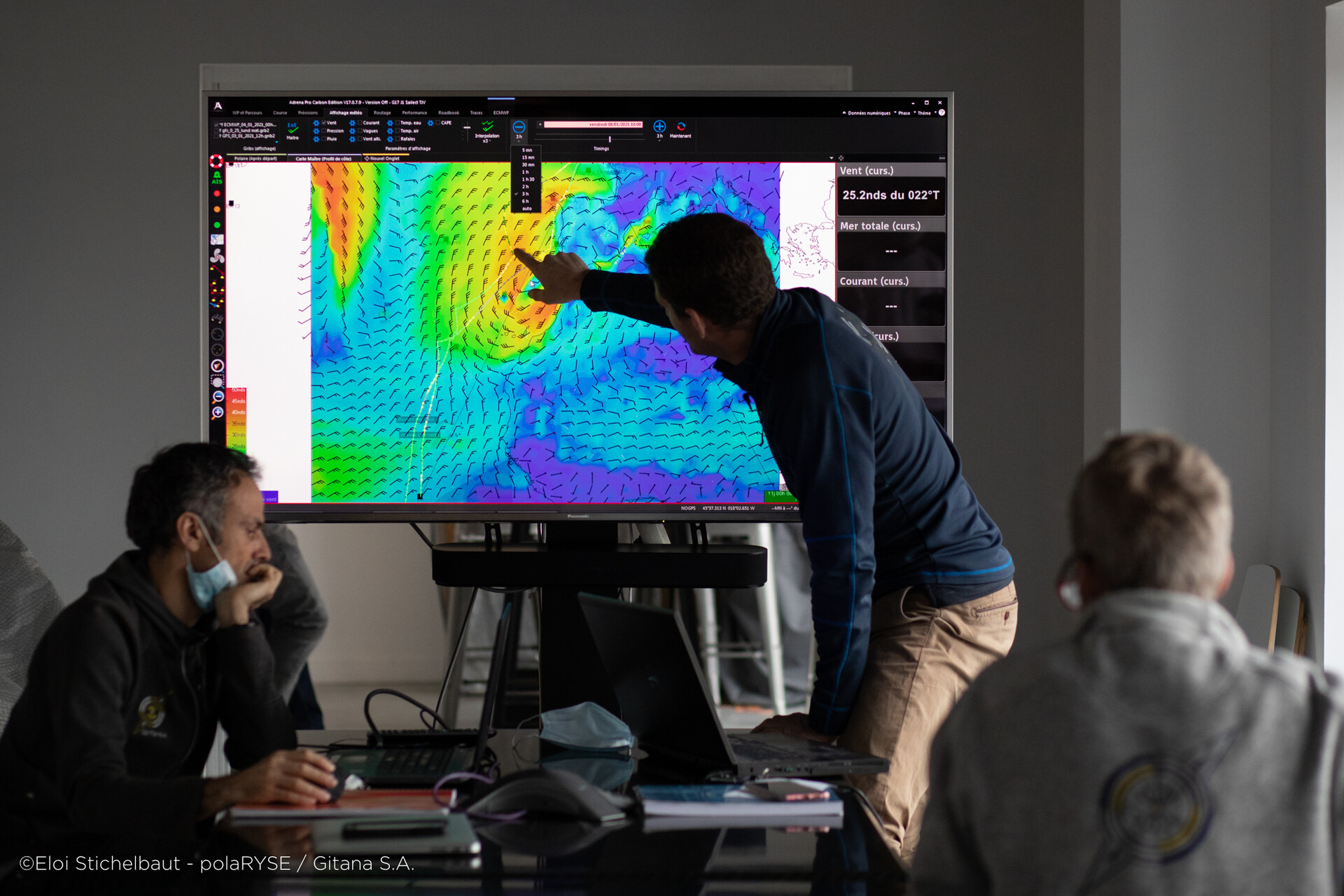The weather scenario is becoming clearer now for the men of the Maxi Edmond de Rothschild, who are keener than ever to make the switch to code green and cast off for the start line of the Jules Verne Trophy offshore of the north-west tip of Brittany. As such, the latest update on the grib forecast files this Tuesday evening is eagerly awaited. Indeed, upon receipt of the latter, the weather cell for the five-arrow racing stable will refine their analysis in a bid to pinpoint the right moment for the 32-metre giant to leave Lorient and set a course for Ushant. Two major trends are currently being weighed up: a departure in the early hours of tomorrow, Wednesday 6 January or some 48 hours later to round off this first week of 2021 in style.

Update on the evening of 5 January
The grib files are converging to indicate a better departure window on Friday 8 January. For that reason, following an analysis of the latest forecasts, the Maxi Edmond de Rothschild’s weather cell has this evening chosen to remain on code yellow to await this favourable scenario. The two skippers, Franck Cammas and Charles Caudrelier, together with their router Marcel van Triest, are observing the situation several times a day and the window will need to be adjusted right to the last moment in order to optimise the initially targeted passage times (equator and Cape Agulhas). The six sailors on the latest Gitana are poised for action and ready to cast off and could leave their home port of Lorient from Thursday if need be.
Pinpointing a target window
At the briefing this Monday morning at 09:30 UTC, Marcel van Triest gave the team the low-down: “2021 seems to want to offer us more opportunities and the coming week should enable us to envisage an initial passage time within the timeframe we’d set ourselves as departure criteria, namely a sub-5-day time to the equator and around 11 days to get below South Africa.”The tone was set then, but the team still had to adjust the timing for crossing the line as best they could to ensure the team manages to follow the sequence of weather systems that is such an essential part of this first third of the record attempt.
Indeed, when the crews set sail from the tip of Brittany, they’re not only seeking a favourable departure window to give them as speedy a passage as possible to the equator, above all they’re aiming for a transition of millimetre precision offshore of Brazil to enable them to hook onto the right wagon to glide down towards the Southern Ocean. It is this exacting coordination, which Gitana Team’s weather cell is currently trying to pinpoint.
Ready for action
This afternoon, at the heart of Gitana Team’s technical base and aboard the Maxi Edmond de Rothschild, both the team and the sailors are busying themselves with the final details: loading the provisions, filling the tanks with water and ‘diesel’ and installing the six sailors’ personal gear… At dawn tomorrow, the latest of the Gitanas will be ready to take on its latest challenge at which point it is the weather that will decide if the first crewed round the world attempt aboard a flying maxi-trimaran will set sail straight away or benefit from a few hours’ respite to hone their weapons.

